Loreto Prieto
Face Recognition in Low Quality Images: A Survey
Aug 07, 2018
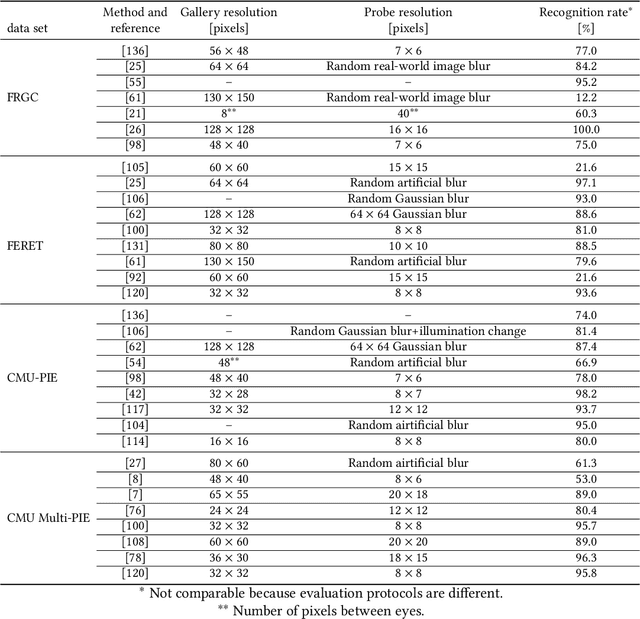
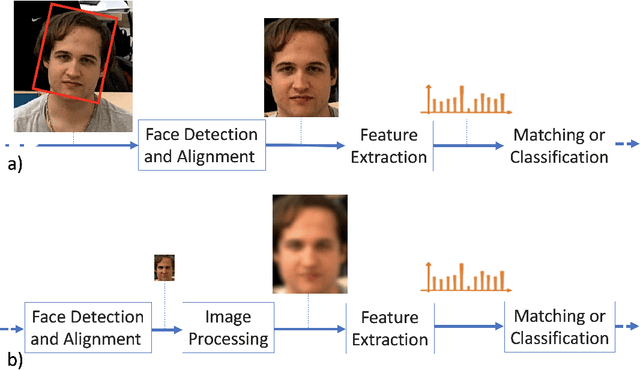
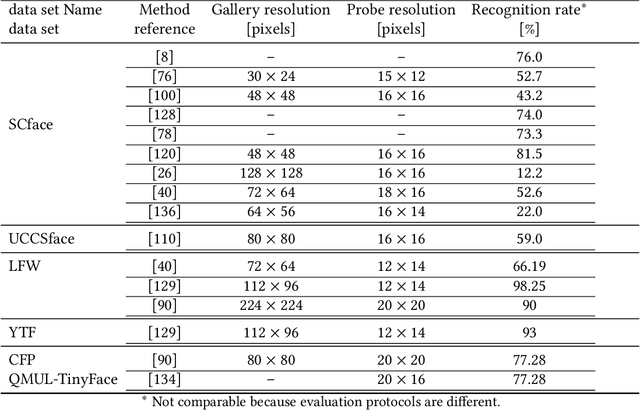
Abstract:Low-resolution face recognition (LRFR) has received increasing attention over the past few years. Its applications lie widely in the real-world environment when high-resolution or high-quality images are hard to capture. One of the biggest demands for LRFR technologies is video surveillance. As the the number of surveillance cameras in the city increases, the videos that captured will need to be processed automatically. However, those videos or images are usually captured with large standoffs, arbitrary illumination condition, and diverse angles of view. Faces in these images are generally small in size. Several studies addressed this problem employed techniques like super resolution, deblurring, or learning a relationship between different resolution domains. In this paper, we provide a comprehensive review of approaches to low-resolution face recognition in the past five years. First, a general problem definition is given. Later, systematically analysis of the works on this topic is presented by catogory. In addition to describing the methods, we also focus on datasets and experiment settings. We further address the related works on unconstrained low-resolution face recognition and compare them with the result that use synthetic low-resolution data. Finally, we summarized the general limitations and speculate a priorities for the future effort.
Low Resolution Face Recognition in the Wild
May 29, 2018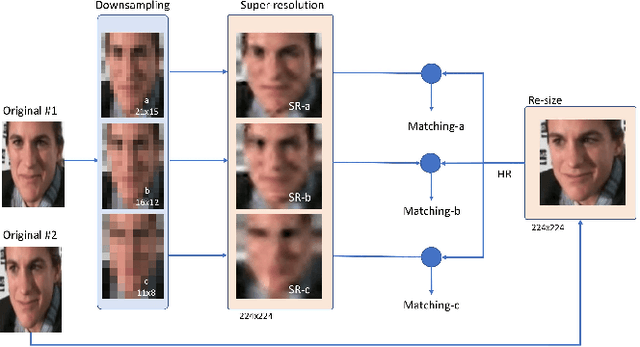

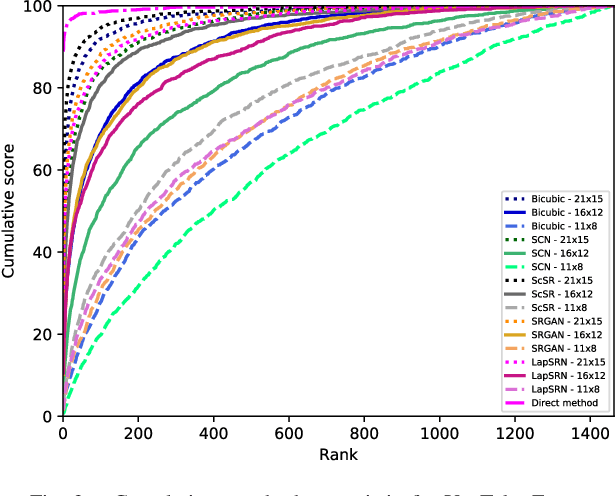
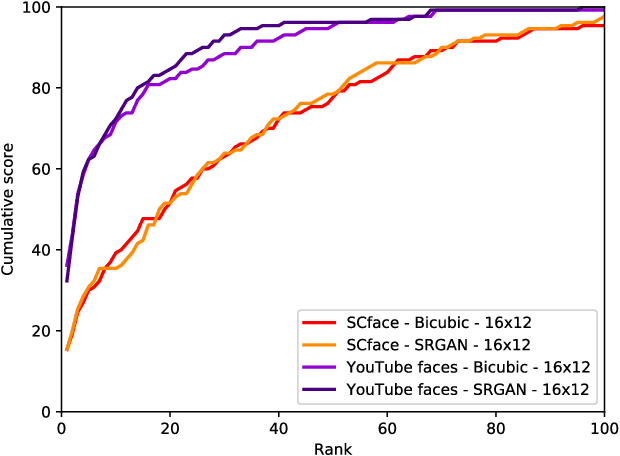
Abstract:Although face recognition systems have achieved impressive performance in recent years, the low-resolution face recognition (LRFR) task remains challenging, especially when the LR faces are captured under non-ideal conditions, as is common in surveillance-based applications. Faces captured in such conditions are often contaminated by blur, nonuniform lighting, and nonfrontal face pose. In this paper, we analyze face recognition techniques using data captured under low-quality conditions in the wild. We provide a comprehensive analysis of experimental results for two of the most important applications in real surveillance applications, and demonstrate practical approaches to handle both cases that show promising performance. The following three contributions are made: {\em (i)} we conduct experiments to evaluate super-resolution methods for low-resolution face recognition; {\em (ii)} we study face re-identification on various public face datasets including real surveillance and low-resolution subsets of large-scale datasets, present a baseline result for several deep learning based approaches, and improve them by introducing a GAN pre-training approach and fully convolutional architecture; and {\em (iii)} we explore low-resolution face identification by employing a state-of-the-art supervised discriminative learning approach. Evaluations are conducted on challenging portions of the SCFace and UCCSface datasets.
 Add to Chrome
Add to Chrome Add to Firefox
Add to Firefox Add to Edge
Add to Edge